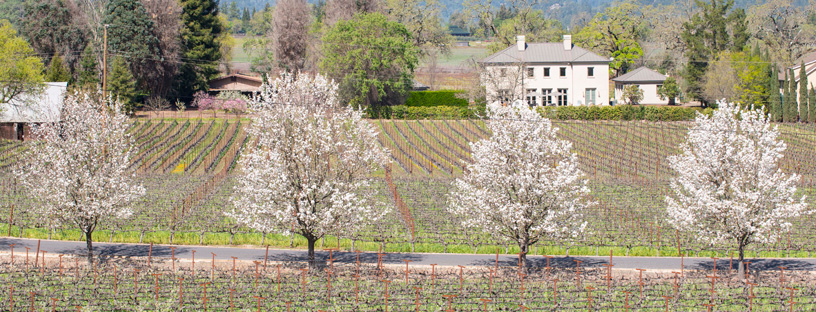The Air District has fined Chevron $900,000 for failing to properly monitor air pollution emissions at its refinery in Richmond.
-
About the Air District
- Advisory Council
- Air District Leadership
- Air District Logos
- Bay Area Clean Air Foundation
- Board of Directors
- Community Advisory Council
- Contracting Opportunities
- Departments
- Diversity Equity and Inclusion
- Enterprise Systems Catalog
- Hearing Board
- History of Air District
- In Your Community
- Job Opportunities
- Mission Statement
- Office of Civil Rights
- Speakers and Tours
- News & Events
- Online Services
- Publications
- Forms
- Public Records
- Contact Us
- Login
Napa County

Learn about Napa County - its climate, potential air pollution concerns, and current air quality. You can also view upcoming Air District events in Napa County and read about local efforts to improve air quality.
Napa County is nestled in a valley between the Maycamas Mountains in the west and the Vaca Mountains in the east. One Napa County representative sits on the Air District’s Board of Directors.
-
-
Spare the Air Alerts issued for Wednesday & Thanksgiving Day due to wood smoke pollution. Use of all wood-burning devices is prohibited.November 25, 2025
The Air District is issuing the winter season’s first Spare the Air Alerts for Wednesday, November 26, and Thanksgiving Day, which bans burning wood, manufactured fire logs or any other solid fuel, both indoors and outdoors.
Learn More -
Public Comment Deadline – Draft Local Community Benefits Fund Guidelines (Nov 25 at 5 PM)November 19, 2025
The public comment period for the Draft Guidelines for the Local Community Benefits Fund for Benicia, Richmond, and surrounding areas closes on Tuesday, November 25, at 5:00 PM. The Draft Guidelines describe the Local Community Benefits Fund, which will reinvest penalty funds back into communities impacted by air quality violations, supporting local projects that improve public health, reduce pollution, and promote a just transition.
Learn More -
The Air District is announcing the launch of its Commercial Electric Lawn and Garden Equipment Exchange Program, a pilot grant program designed to reduce air pollution by replacing gasoline and diesel-powered landscaping equipment with cleaner, zero-emission electric alternatives.
Learn More -
-
-
-
10/27/2025 Air District issues prescribed burn notice for October 27-31
October 27, 2025
-
10/22/2025 Air District awards $5M to electrify special education school buses
October 22, 2025
-
10/17/2025 Air District issues prescribed burn notice for October 17 - 24, 2025
October 17, 2025
-
10/9/2025 Air District fines Marathon Martinez Refinery $372,550 for violations
October 9, 2025
-
10/1/2025 Air District Board adopts wood burning and prescribed burning amendments to protect public health and reduce wildfire risk
October 1, 2025
-
9/27/2025 Air District issues air quality advisory for wildfire smoke through Sunday
September 27, 2025
-
9/25/2025 Air District receives first finance award for excellence in budget process
September 25, 2025
-
9/22/2025 Air District issues Spare the Air Alert for Tuesday
September 22, 2025
-
9/15/2025 Air District awards $1.18 million to San Ramon Valley Unified School District for new EV school buses, charging infrastructure
September 15, 2025
-
9/11/2025 Air District opens Clean Cars for All program with $10 million in funding
September 11, 2025
-
9/10/2025 Air District strengthens leadership team, staffing to deliver on permitting priorities & strategic goals
September 10, 2025
-
9/2/2025 Air District fines Chemtrade West US LLC $160,000 for air quality violations
September 2, 2025
-
8/26/2025 Air District lifts air quality advisory for wildfire smoke
August 26, 2025
Climate
The mountains bordering Napa Valley block much of the prevailing northwesterly winds throughout the year. Sunshine is plentiful in Napa County, and summertime can be very warm in the valley, particularly in the northern end. Winters are usually mild, with cool temperatures overnight and mild-to-moderate temperatures during the day. Wintertime temperatures tend to be slightly cooler in the northern end of the valley. Winds are generally calm throughout the county. Annual precipitation averages range from about 24 inches in low elevations to more than 40 inches in the mountains.
Interactive Air Monitoring Stations Map
Air Quality in Napa County
Ozone and fine particle pollution, or PM2.5, are the major regional air pollutants of concern in the San Francisco Bay Area. Ozone is primarily a problem in the summer, and fine particle pollution in the winter.
In Napa County, ozone rarely exceeds health standards, but PM2.5 occasionally does reach unhealthy concentrations. There are multiple reasons for PM2.5 exceedances in Napa County. First, much of the county is wind-sheltered, which tends to trap PM2.5 within the Napa Valley.
Second, much of the area is well north of the moderating temperatures of San Pablo Bay and, as a result, Napa County experiences some of the coldest nights in the Bay Area. This leads to greater fireplace use and, in turn, higher PM2.5 levels. Finally, in the winter easterly winds often move fine-particle-laden air from the Central Valley to the Carquinez Strait and then into western Solano and southern Napa County.
Last Updated: 4/21/2017

